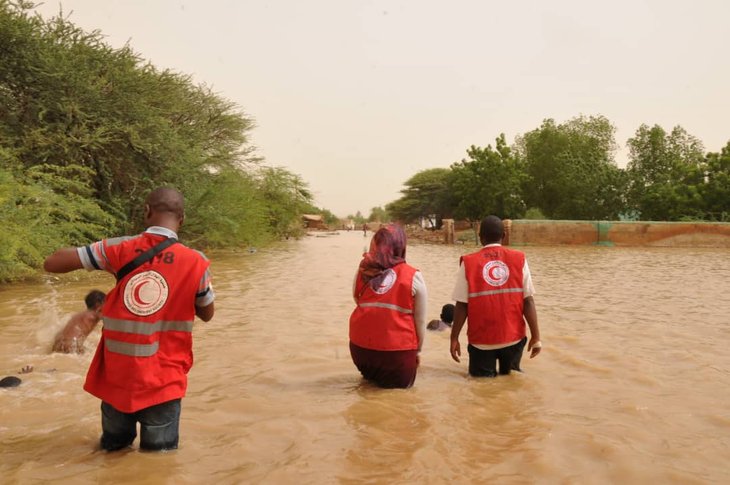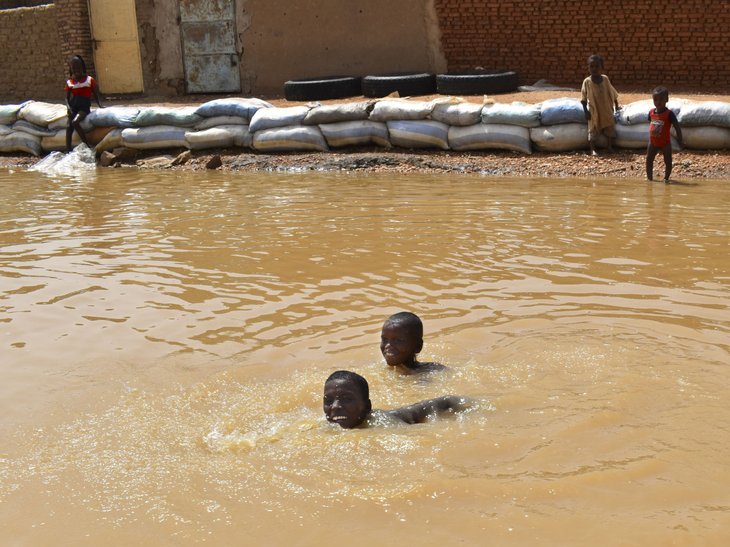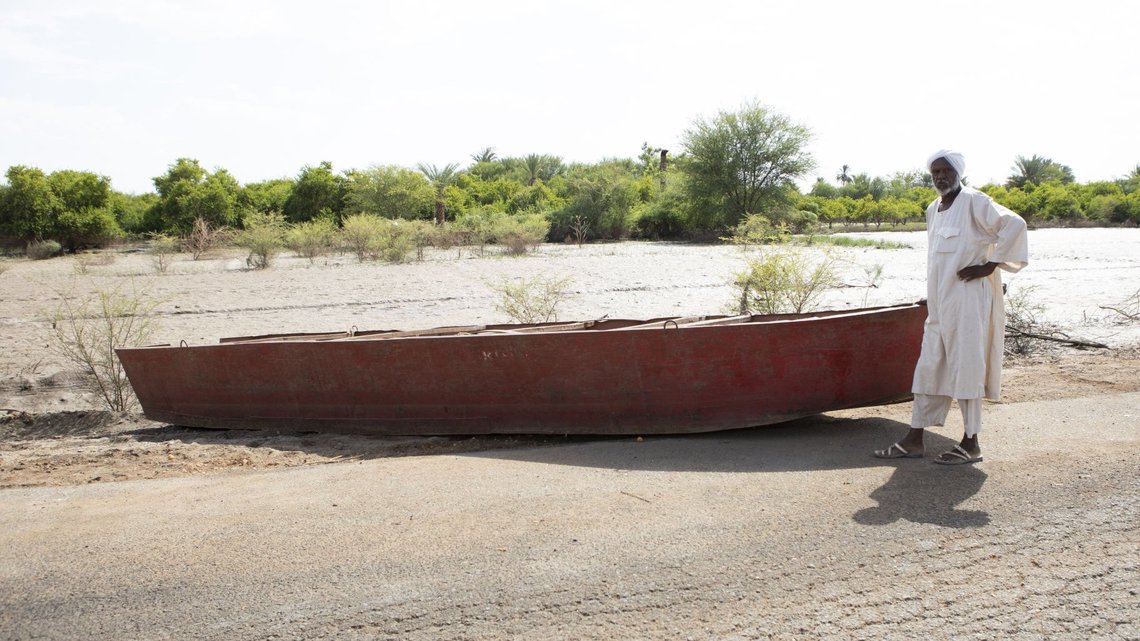Sudan: how to develop a trigger for flooding
People in Sudan continue to suffer from the effects of flooding. That's why the German Red Cross is supporting the Sudanese Red Crescent to introduce forecast-based financing in the country. The goal is to better predict floods and help people protect themselves and their assets. In this context, the terms 'trigger' or 'threshold value' are used repeatedly. But what do these mean and how are they defined? Climate forecasting expert Dave MacLeod knows the answers.
Good anticipatory humanitarian action needs careful preparation
A trigger in the context of forecast-based financing helps us to predict an upcoming weather event like a cold wave, a heat wave or – in Sudan – riverine flooding, and take action before it hits the population. It's the point where the likelihood of the hazard resulting in serious impacts for the population, within a certain time frame, is so high that people need to actively protect themselves. In short: if this trigger, or threshold value, is reached or exceeded in a region, the Sudanese Red Crescent activates a plan called an early action protocol (EAP), which is used to roll out rapid humanitarian support for people forecast to be in need. These early actions include measures that have been assessed as being useful for this particular risk, and often include early warnings and other humanitarian assistance.
An effective EAP requires the trigger to be designed carefully. That's why experienced experts like Dave MacLeod are involved. MacLeod, who holds a doctorate in climate forecasting, is currently helping to identify the trigger for riverine flooding in Sudan and knows this process is complex. “Trigger development requires working together with stakeholders to first understand the hazard and its potential level of impact,” he says. “We work to map out the potential sources of forecast information that could be used.”
MacLeod and his colleagues then fill in a 'menu of forecasts', as he calls it, to understand the feasibility of using each source of information as a trigger. They need to answer questions such as: is it relevant to the hazard? Would it provide a sufficient lead time for early action? “Crucially, we also push to understand the level of 'skill' or accuracy of the forecast,” he explains. “For instance, if we chose to trigger on the occurrence of some forecast condition – let's say a 60 per cent probability of a river flooding – how frequently would we trigger and how many of these triggers would lead to a false alarm?”

Forecasting riverine floods in Sudan
For the joint German Red Cross and Sudanese Red Crescent project, MacLeod is exploring how to forecast riverine flooding. “We consider rainfall, alongside forecasts of river height, which can be provided by hydrological models.” The team is also considering several sources of forecast information, including rainfall forecasts from the Sudan Meteorological Authority, river forecasts from the Ministry for Irrigation and Water Resources, along with forecasts from regional climate services providers and global flood forecasts.

Challenges in Sudan
“Trust in the trigger model is strengthened by building an understanding of the level of forecast skill," he adds. "This in turn is strengthened by the availability of observational data for forecast evaluation. For river height forecasts, this can be a challenge. This is why in Sudan we are working together with partners to build data-sharing relationships, so that these records can support forecast evaluations. All parties involved benefit from this cooperation – we have a better data basis, while our partners can use our data. They also get support with some of their projects, for example in the form of personnel time or technical capacity.”
Additionally, riverine flood forecasts crucially depend on characterizing upstream discharge. That´s why strong international data-sharing agreements – or their absence – are an important aspect to consider, he explains.

“I like being helpful!”
After collecting the data with all key stakeholders and evaluating the river flood threshold, Dave advises the Sudanese Red Crescent and its partners on how to use the forecasts in the final trigger model when – building on that – they develop and submit an EAP. “I like being helpful,” he says about his work. “The chance to apply my knowledge for something with important practical use is very motivating.” His work will soon help people at risk to protect themselves earlier and more effectively against flooding, with the help of the Sudanese Red Crescent.

